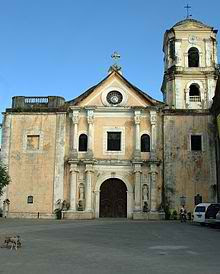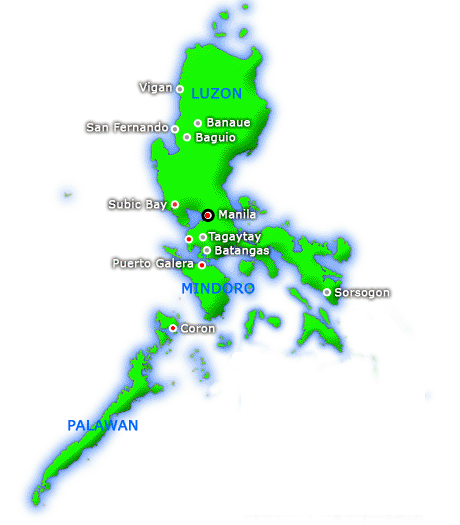 |
| Intramuros Manila, Philippines |
Another famous spot in Philippines’ Luzon Island is the thick-walled medieval and the oldest city of Manila, Intramuros. This walled city is evident of Old Spanish history built in the late 1500s. It is where several Spanish churches and other landmarks are located. This area caters the scenic view of the Manila Cathedral, San Agustin Church with its magnificent 4,500-pipe organ, and the parks such as the Puerta Real Gardens and the Baluarte de San Diego. Surrounded by 8 feet thick stone walls that rise up to 22 feet, the city was built to protect the Spanish government and citizens from raiding Chinese pirates. It is also a picture of how the Spanish treated the country. During the World War II, the city was left in ruins after repeatedly bombed by the Japanese forces. Only two churches and the Fort Santiago are left standing today.
The Manila Cathedral Church
 |
| Manila Cathedral: Philippines |
It is known as the Cathedral-Basilica of the Immaculate Conception the first cathedral of the Roman Catholic Archdiocese in the Philippines. It is dedicated to the Patroness of the Philippines, Blessed Virgin Mary under the title Our Lady of the Immaculate Conception. It was constructed in 1581 made mainly of nipa and bamboo. Damaged by typhoon the following year and it 1583, it was ravaged by fire. It was renovated on 1592 and the edifice was built with stone; however, it was destroyed by an earthquake on 1600.
 |
| Philippines: Manila Cathedral Interior |
It has been renovated over the times and now is the famous wedding destinations of the Philippines.
The San Agustin Church
 | ||
| San Agustin Church Philippines |
The San Agustin church is the oldest stone church in the Philippines. Completed on 1607, it is the oldest church still standing in the country. It is one of the four churches constructed during the Spanish colonial period to be designated as a World Heritage Site by UNESCO , under the classification "Baroque Churches of the Philippines". On 1976, it has been named a National Historical Landmark by the Philippine government.
 |
| Philippines: San Agustin Church Interior |
San Agustín Church measures 67.15 meters long and 24.93 meters wide. It has withstood numerous earthquakes that destroyed several churches in Manila due to its elliptical foundation. The main door has been ornately carved. The church courtyard is graced by several granite sculptures of lions, which were a gift by Chinese converts to Catholicism. The present structure is actually the third Augustinian church established on the site.
The Puerto Real Gardens
 | ||||||||||||
| Puerta Real Gardens: Intramuros, Manila, Philippines |
This place is famous for wedding receptions. It has been transformed into a park where people can soothe their burning brains and fiery eyes.It sits right in front of the main entrance to the Intramuros complex. It has a drawbridge which allows visitors to cross a small body of water.
Baluarte de San Diego
 |
| Baluarte de San Diego: Intramuros, Manila, Philippines |
Baluarte de San Diego is built and designed by the Jesuit priest Antonio Sedeno (1586-1587). It is one of the oldest stone edifice in Intramuros.
Note: Pictures were taken from Google images. They are owned by different people. It is only used to give viewers an overview of the place. Copyright remains to its sole owner.



